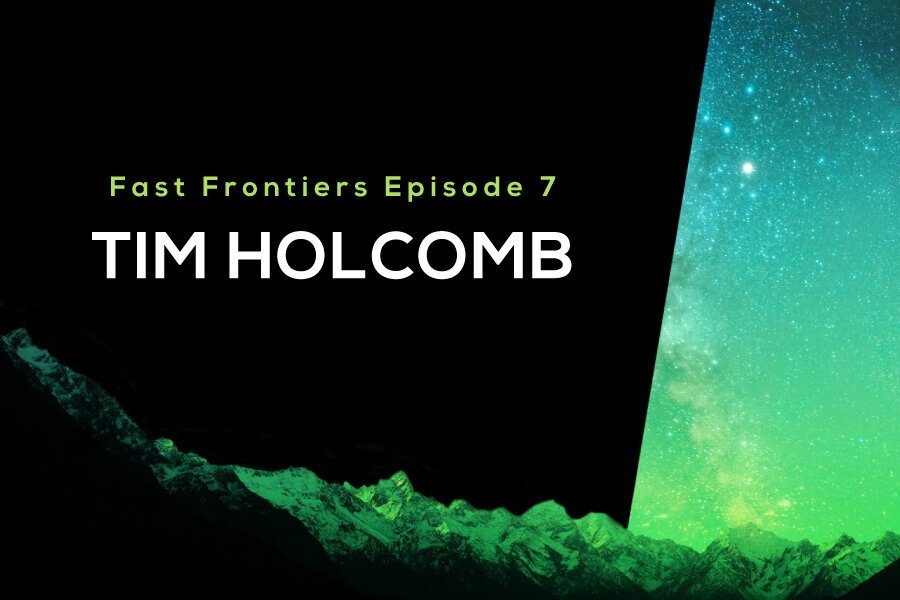I was ecstatic when I got the opportunity to sit down with my friend Dr. Tim Holcomb. Tim is the associate professor of entrepreneurship and chair of the department of entrepreneurship in the Farmer School of Business at Miami University. Tim also serves as director of the John. W. Altman Institute for Entrepreneurship at Miami. Before that, Tim was the Jim Moran professor of entrepreneurship and executive director of the Jim Moran Institute for Global Entrepreneurship at Florida State University. He helped raise $100 million to establish the nation’s largest interdisciplinary entrepreneurship school.
Tim started as an entrepreneur at Accenture, then founding Telecom Global Solutions, which was later acquired by what was is now known as Flex, but what was Flextronics at the time. Now, he’s active in Cincinnati, currently helping four venture-funded companies (ReliaQuest, Oros, Circle, and MicroTech), as well as heading up one of the best entrepreneurship competitions in existence today.
Q: Why don’t you tell us a bit more about your journey?
“I tell my students that I’m on my third career. When I came out of the master’s program at University of Louisiana at Monroe, I took a position with what was then Arthur Andersen’s management and information consulting division. This was in 1986. I thought it would be a short tenure there as I tried to figure out what the heck I wanted to do when I grew up, and 13 years later, I found myself working with a number of Fortune 100 companies. I spent time with Nike, PepsiCo, Frito-Lay, Latanzo, American Airlines, so it was a great opportunity for me to learn, at least at the higher echelons, how corporate America dealt with strategy in individual problems.”
Fast forward to the late 90s, when the opportunity to start his own company presented itself to Tim, about two years after the U.S. had deregulated the telecom industry. “There was an enormous amount of capital that was flowing in to what today is the 3G build out.” So Tim “took the design build out, and ran a methodology out of Accenture, dropped it into the wireless 3G build out, then launched.”
But when the markets began to cool in the early 2000’s, Tim decided to sell the company to Flextronics. “It was an exciting period for me. We went from a business plan to almost 300 employees, on 40 client engagements in 15 countries, all in the span of about 24 months, then sold the company.” After that, Tim moved to Europe and launched the network services division for Flextronics, which grew to about 8,000 employees and almost $800 million in revenues in just two years.
At this point, Tim decided that he needed to go to detox for the corporate environment and decompress. So he went back and got a Ph.D. at Texas A & M University, then made his way to Cincinnati after seven years at Florida State. A move that he does not regret.
“The Miami environment is a pretty special environment. Our students are special. And the program that we’ve erected there, and the entrepreneurship world, so to speak, is pretty unique as well. And I think that one of the things, for me personally, that is gratifying, is to once and for all be able to bring 20 years of, 30 years of experience to bear, to make a real impact on 18, 19, 20, 21-year-old students.”
Q: What have you learned so far about what it means to teach entrepreneurship?
“I like to say we don’t teach students about entrepreneurship; we teach them to do it,” Tim replied. “I think one thing that we’ve learned is that entrepreneurship is eclectic, in that it’s interdisciplinary in the way in which we work together with disciplines from lots of different areas.”
Tim explained that there are important “pillars” to what the instructors do at Miami: “One is that we built a set of curricula and co-curricular programs that are truly interdisciplinary in nature. And evidence of that is last year we had over 2,800 students take at least one course in entrepreneurship. For the first time ever, we had at least one student from every major across campus participate in the program, that’s all 116 undergraduate majors.”
A second important pillar, according to Tim, is a program they created that is wholly practice-based and immersive in its approach. “When I explain why we emphasize a practice-based immersive approach, I use the analogy of basketball…The challenge we face is that today we want to give students as many shots on goal as possible, with the fundamental belief that when they move beyond Miami, and they graduate and go out into the real world, that they are job-ready day one.”
Tim elaborated: “Central to the design of what we do in our program is this fundamental belief in the transformative power of learning by doing, and which is one of the reasons why so much of what we do with our students requires relationships with people like yourself. You know very well that we’ve worked really hard with our program to integrate with the ecosystem, not just in Cincinnati, the StartupCincy movement, but across the U.S. We have strong relationships on the West Coast and the East Coast, buffeted in large part by the alumni that have gone on to do some great things in those markets.”
Tim shared much more about the exciting things happening at Miami, including how the University and its President are grappling with the challenges that the current pandemic is causing for higher education. Also discussed are how the times have changed for startups, no longer restricting them to certain geographic hot spots like Silicon Valley. Call him biased, but Tim assures us that, nowadays, “Savvy entrepreneurs, both seasoned as well as first-timers, recognize the fact, or are coming to recognize the fact, that the opportunity to launch high-growth companies is as much evidenced here in the Midwest as it is in either coast.”



